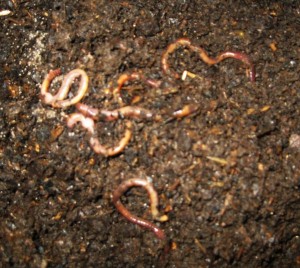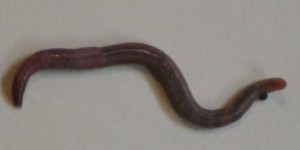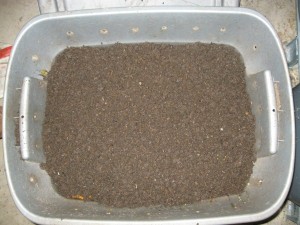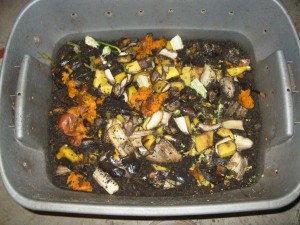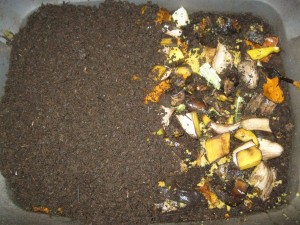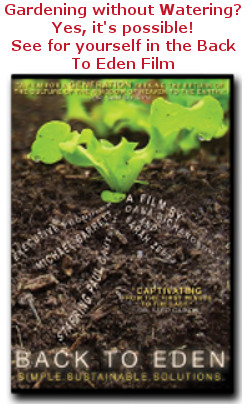Now that you have the bedding prepared and in the worm bin, it’s time to add worms! Red Worm—Red Wiggler—Esenia Fetida—these are just a few of the names for the little guy that is your composting friend. He/she, as it is both male and female in one unit, is the powerhouse “muncher” you will use to get rich compost. They also make great fishing bait as a side benefit.
The worms work silently and tirelessly within the bedding as long as you feed and water them and keep them in a good environment. They also multiply quite rapidly. Add just a large handful of worms to your small worm bin and within a few months you will have a whole herd of them munching away at your table scraps.
In ideal conditions, they can reproduce near a rate of 10 young per week. Just imagine how many you could have in as little as three or four months.
Where to get worms:
There are many good sources on the web to buy red worms. You’ll want to make sure you get them from a source that has been in business for some time. These will likely have the best care and shipping processes.
My best recommendation is to see if you have any friends that raise them and just ask for a free handful. That’s all you really need to get started. I like sharing worms with my friends. It’s fun to hear them come back in a few months and share how many have grown from just that handful. I’m sure your friend would also be happy to give you some if it is just a small amount.
What to do when you first get worms:
When you first get your worms, put them in the bedding without any food. Wait a couple days before adding food. Also, and very important, keep the lid off the worm bin and have an overhead light on the worms for about 24 hours. The worms don’t like the light and this will keep them in the bedding until they get used to it. Many times they will likely try to escape a new home if you don’t do this.
The first time I got worms, I started with two bins and about 1000 worms in a dark room in my basement. I was starting BIG. I didn’t follow this key step and when I went to check on them the next morning, I had 1000 dried worms all over the floor. They all had crawled out of the bins and dried up dead. I learned my lesson.
Once they get comfortable after 24 hours, you can put the lid on and they should stay in the bin. Leave them alone for a few days and then feed them.
What and how often to feed worms:
I feed the worms vegetable and fruit scraps from the kitchen. Raw foods are best. I have found that the worms really love banana peels and carrot shavings. This is like candy to them. Watch out though as the banana peels attract fruit flies.
What not to feed? It’s not good to feed them meat or dairy related items or too much citrus produce. Also, stay away from oils such as salad dressings and greasy foods. Cat and dog litter is not good either.
Throw in an occasional dried bread heel. Just put the dried heal on the surface of the bedding and come back in a day or two. You’ll find a whole bunch of worms eating away on the underside.
I feed the worms about once a week by spreading scraps all around on the surface of the bedding. Feed the worms less when you first start to allow the smaller numbers time to eat the food. You don’t want to put too much food in at the beginning.
After you’ve added the food, put about a 1 inch layer of additional bedding on top to give the worms some working room and also to keep the flies down. At times, fruit flies can be a problem, especially with banana peels as I mentioned before.
What else to do:
Also about once a week, check the moister content in the bedding. Add water if needed to keep the bedding moist. Keep the lid on the bin when not working with the worms. That’s about it. Pretty easy.
How and where to store your worms:
Store the worms indoors or outdoors in the shade. They prefer temperatures that range from 50 to 80 degrees. They can go below 50 degrees but will really slow down. In the winter time, either bring them indoors or keep them in an area that will not freeze. Don’t let them freeze or they will die. If they get too hot, they will die as well. But they are fairly resilient creatures.
As you add food and bedding weekly, you’ll eventually get near the top of the bin. When it gets almost full, you are ready to harvest the poop. I’ll talk next time about easy ways to harvest the compost and separate out the worms to start over again.
Happy worm farming!
What tips do you have for raising worms?

